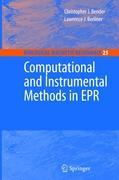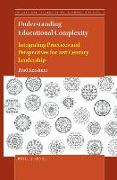Computational and Instrumental Methods in EPR
BücherAngebote / Angebote:
Computational and Instrumental Methods in EPR
Prof. Bender, Fordham University
Prof. Lawrence J. Berliner, University of Denver
Electron magnetic resonance has been greatly facilitated by the introduction of advances in instrumentation and better computational tools, such as the increasingly widespread use of the density matrix formalism.
This volume is devoted to both instrumentation and computation aspects of EPR, while addressing applications such as spin relaxation time measurements, the measurement of hyperfine interaction parameters, and the recovery of Mn(II) spin Hamiltonian parameters via spectral simulation.
Key features:
Microwave Amplitude Modulation Technique to Measure Spin-Lattice (T1) and Spin-Spin (T2) Relaxation Times
Improvement in the Measurement of Spin-Lattice Relaxation Time in Electron Paramagnetic Resonance
Quantitative Measurement of Magnetic Hyperfine Parameters and the Physical Organic Chemistry of Supramolecular Systems
New Methods of Simulation of Mn(II) EPR Spectra: Single Crystals, Polycrystalline and Amorphous (Biological) Materials
Density Matrix Formalism of Angular Momentum in Multi-Quantum Magnetic Resonance
About the Editors:
Dr. Chris Bender is assistant professor of Chemistry at Fordham University.
Dr. Lawrence J. Berliner is currently Professor and Chair of the Department of Chemistry and Biochemistry at the University of Denver after retiring from Ohio State University, where he spent a 32-year career in the area of biological magnetic resonance (EPR and NMR). He is the Series Editor for Biological Magnetic Resonance, which he launched in 1979.
Folgt in ca. 15 Arbeitstagen




